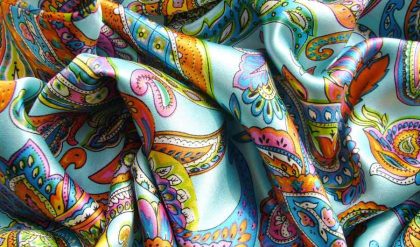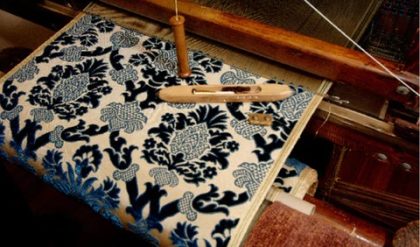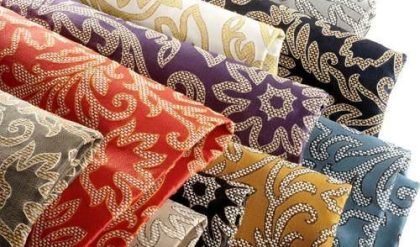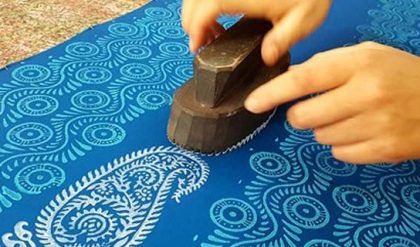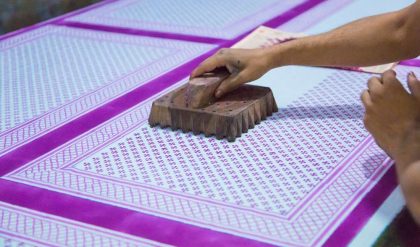Designs in which the ornament consists chiefly of small, detached spots or figures are employed and where elaborate figure ornamentation is not desired. Spotted effects are produced in cloths in different ways—e.g., by employing fancy threads in which spots of contrasting color occur at intervals, and by introducing extra warp or extra weft threads which are brought to the surface where the spots are formed. In the following, however, only the system of producing spot figures is considered in which the spots are formed by floating the ordinary weft or warp threads on the surface of the cloth in an order that is in contrast with the interlacing in the ground. The figures show most prominently when the warp and weft threads are in different colors or materials; but if the two series of threads are alike the difference in the reflection of the light from the different weave surface is sufficient to render the figures clearly visible. Other things being equal, the weft usually forms brighter and clearer spots than the warp: (1) because it is more lustrous and bulky
on account of containing less twist; and (2) because cloths generally contract more in width than in length, the weft thus being brought more prominently to the surface than the warp.
Methods of drafting spot figures
Simple spot figures are readily designed directly upon point paper, and the outline may be first lightly indicated in pencil, as represented at A. The squares are then filled in along the outline, as indicated at B, and this is followed by painting the figure solid, as shown at C. If the ground weave is plain, in painting the outline, the moves should be in odd number of squares, as shown at D, in order that the edge of the figure will fit correctly with the plain marks. If only short floats are required in the figure a simple weave (e.g., a twill or sateen) may be inserted upon it in a color of paint that is in contrast with the first color as represented by the blanks E. On the other hand, the binding marks may be inserted in such a manner as to give a special appearance to the figure as indicated at F. The prominence of the figure is usually reduced about in proportion to the firmness of the binding weave, but, as a rule, a float longer than 0.5 cm should not be made or the structure will be too loose.

Spot figures which are rather intricate may be sketched upon plain paper and then be drafted upon design paper in the manner illustrated at I, J, and K.

Distribution of spot figures
It is only in special cases, when a spot is arranged to fit in the cell of a colored check, that a figure is used only once in the repeat of a design. Generally, two or more figures are contained in the repeat, and it is necessary for them to be placed at a suitable distance apart, and evenly distributed over the repeat area. The repeat must be at least so large that
the figures do not encroach upon each other, and the factors which influence the number of ends and picks in a repeat are as follows:
(a) The size and shape of the figure;
(b) the number of figures;
(c) the amount of ground space required;
(d) the number of threads in the repeat of the ground weave. Even distribution of the figures is secured by employing a simple weave—such as plain and certain sateens—as the basis of the arrangement.
